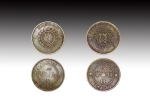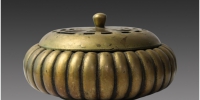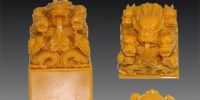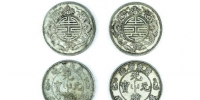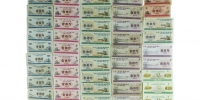2019新加坡精品推荐 四川铜币(一组)
成都博古轩拍卖有限公司【藏 . 荐】栏 为藏品强大的传播效应向各位买家推荐经国家一级鉴定专家甄选的艺术珍品 , 为藏家牵线搭桥 , 让千百件艺术珍品价值被发掘与重视 , 在拍卖会上得以高价成交。
Chengdu Boguxuan Auction Co., Ltd. [Tibet. Recommendation] column recommends art treasures selected by experts at the first level of national appraisal to buyers for the powerful dissemination effect of the collection. It helps collectors to bridge the gap, so that the value of thousands of art treasures can be excavated and valued, and high prices can be concluded at the auction.
【名称】 四川铜币两枚
【规格】 直径:36.22mm 重:17.12g 直径:36.4mm 重:17.38g
【类别】 杂项
【展示价】 1 200000.00 CNY
Two Sichuan Copper coins
[Specification] Diameter 36.22mm Weight 17.12 mm Diameter 36.4 mm Weight17.38 mm
[Display Price] 1 20 0000.00 CNY
清光绪二十六年(1900年),两广总督李鸿章奏准在广东开铸圆形无孔铜币(铜元)。次年,清政府谕令沿江沿海各省准许仿造 。光绪二十七年,四川省在成都设四川铜元局,于二十九年六月开工铸造当五 、当十文面额 铜币,七月增铸当二十文铜币。
光绪二十四年,户部通令各省暂停铸造铜币,四川总督赵尔丰请免停,获准续铸。宣统元年,度支部下令撤并各省银铜厂局,赵尔丰再次请求续铸获准。四川遂成为宣统年间少数可续铸大清铜币的省份。
In the 26th year of Guangxu in Qing Dynasty (1900), Li Hongzhang, governor of Guangzhou and Guangdong, was certified to cast round copper coins (copper coins) without holes in Guangdong. The following year, the Qing government ordered coastal provinces along the Yangtze River to permit imitation. In the twenty-seventh year of Guangxu, Sichuan Province set up the Sichuan Copper Yuan Bureau in Chengdu. In June of 29, construction began to produce five or ten denominations of copper coins, and in July, twenty additional bronze coins.
In the 24th year of Guangxu, the Ministry of Household Affairs ordered all provinces to suspend the casting of copper coins. Zhao Erfeng, governor of Sichuan Province, was granted permission to continue casting without stopping. In the first year of Xuantong, the Duzhi branch ordered the withdrawal of the provincial silver and copper factory bureaus, and Zhao Erfeng again asked for permission to continue casting. Sichuan became one of the few provinces in Xuantong that could continue to mint copper coins in the Qing Dynasty.
辛亥革命以后,四川大汉军政府于1912年4月废止大清铜币模板,改铸“汉”字铜元,有当10文、20文、50文三种面额。1913年,增铸当100文、200文的铜币。1913年5月,重庆铜元局建成开工,均仿成都厂模式。
进入北洋时代以后,军阀割据、时局动荡,铜价高昂,于是四川铸币厂采取降等减重、加大面值的方法谋取私利。民间除老一百文、老两百文铜币色泽稍紫外,其余呈黄白色,质地劣于大清铜币。1914年起,专铸当100文、当200文铜元。各军阀纷纷效尤,铸造的铜币达数亿枚,四川币制混乱不堪。
1935年,国民政府在四川推行法币,四川铜币遂逐渐退出流通市场。
After the Revolution of 1911, the military government of Sichuan Han Dynasty abolished the copper coin template of the Qing Dynasty in April 1912, and changed the "Han" copper coin into three denominations: 10, 20 and 50. In 1913, 100 and 200 coppers were added. In May 1913, Chongqing Tongyuan Bureau was built and started construction, all of which imitated the Chengdu Factory model.
After entering the Beiyang era, warlords were separated, the situation was turbulent and copper prices were high. So the Sichuan Mint took the method of reducing weight and increasing par value for personal gain. In addition to the old one hundred and two hundred bronze coins, the others are yellow-white and inferior in texture to the Daqing bronze coins. Since 1914, 100 and 200 bronze yuan have been specially cast. Warlords followed suit one after another, casting hundreds of millions of copper coins, and the Sichuan currency system was in chaos.
In 1935, the National Government introduced French coins in Sichuan, and Sichuan copper coins gradually withdrew from the circulation market.
